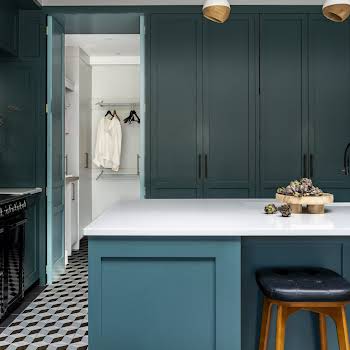Here’s how we can create more sustainable homes, according to the experts
By Grace McGettigan
22nd Apr 2020
22nd Apr 2020
Have you ever wondered what sustainable homes in the future might look like? Here, design experts – including Tiffany Grant-Riley, Katie Treggiden and packaging supplier Rajapack – weigh in on our homes-to-be.
Often when you think of the 1990s, it feels like just 10 years ago. In reality, it was almost 30 years ago and things have changed a lot since then. Today, mobile phones are slimmer; our eyebrows are fuller, and we no longer have dial-up internet connections interfering with the landline.
In the world of interiors, things have changed a lot too. Bold, patterned carpets are gone. The curtains and cushions that matched them are gone too, and in their place are sleek and modern materials. Not only that, but more people are favouring apartment-living more than ever before.
But is our current way of living here to stay?
Ever-changing
The reality is that our world is constantly changing and we simply can’t go on living the way we have been.
Everything from the materials we use to decorate our houses to the fuels we use to heat them are damaging our environment. With sustainability becoming more important than ever, it’s now time to embrace designs of the future.
Rajapack, a UK packaging company, recently teamed up with interior experts, Tiffany Grant-Riley and Katie Treggiden, to discuss how living in the future will be (and especially how interior design will reflect these changes).

Sustainable structures
Design journalist, Katie Treggiden says cardboard houses are a real possibility for the future; both for new builds and adaptations of existing buildings.
“We’ve been experimenting with cardboard as a sustainable building material since Buckminster Fuller, an American architect who prototyped a house in 1944,” she says, highlighting cardboard’s low cost, flexibility, strength, sustainability, and recyclability.

“Japanese architect, Shigeru Ban, returned to the material in the 1990s,” she adds. “He built a schoolhouse in China, a concert hall in Italy, and a cathedral in New Zealand, all out of cardboard, promising a life expectancy of 50 years for the latter”.
What’s more, “fast-growing, mouldable and entirely compostable, fungal mycelium is a really exciting material to watch,” she explains, saying it can be used in cladding, temporary structures and insulation.
Plant-based furniture
This fungal mycelium will be (and is already being) used to make home furniture. Tiffany Grant-Riley says British furniture designer Sebastian Cox is one such person turning his attention to this.
“In his lab, Cox has demonstrated how furniture can be grown using the underground root structure of mushrooms combined with timber,” she says.

“Bolt Threads, a Californian company, has also developed a mycelium product; this time creating Mylo (™), a leather-effect fabric which is just as durable and tactile, without the environmental impact on farming animals”.
Related: House hunting? Look out for these signs of poor energy efficiency
Not only that, but Tiffany adds, “Natural fibres are also enjoying popularity right now (think cork, bamboo, plywood and linen), and these will continue to play a part in our homes.
“The fact that they can be produced ethically with a low impact on the environment makes them a solid choice, especially as they become visually more refined as a material”.

Green space
With new high-rise apartment blocks being built every year, Tiffany Grant-Riley believes people will start to bring more green spaces indoors.
“Interiors will become integrated, multi-purpose spaces favouring precisely-engineered, modular furniture over single-use, large scale pieces,” she says.
“Botanical motifs currently seen in the houseplant trend will evolve into an integrated part of living; demonstrating the importance of biophilic design connecting us with nature.
“Indoor garden spaces might become a regular feature, particularly where green areas are rare,” Tiffany adds.

Technology is already allowing apartment-dwellers to grow fresh produce indoors. For example, the Smart Garden 3 is a gadget that provides the water, light and nutrients plants need to grow.
Its sleek design means it fits neatly onto a kitchen counter, coffee table or windowsill; while its smart soil allows owners to grow their own basil, peppers, tomatoes and peas.
Homeowners throughout Ireland are already using this smart technology, and with things changing as quickly as they have been, who knows where this will lead?

While politicians continue to fret over Brexit and upcoming elections, it’s comforting to know things are being done to prepare for life in the future.
Sure, there’s still a lot of work to be done – but the ball is rolling, and the future looks green and bright.
Photos: Rajapack
Read more: House hunting? Look out for these signs of poor energy efficiency
Read more: Houseplant SOS: What your potted pals are trying to tell you
Read more: Parents call for ‘living walls’ to be installed in London schools























